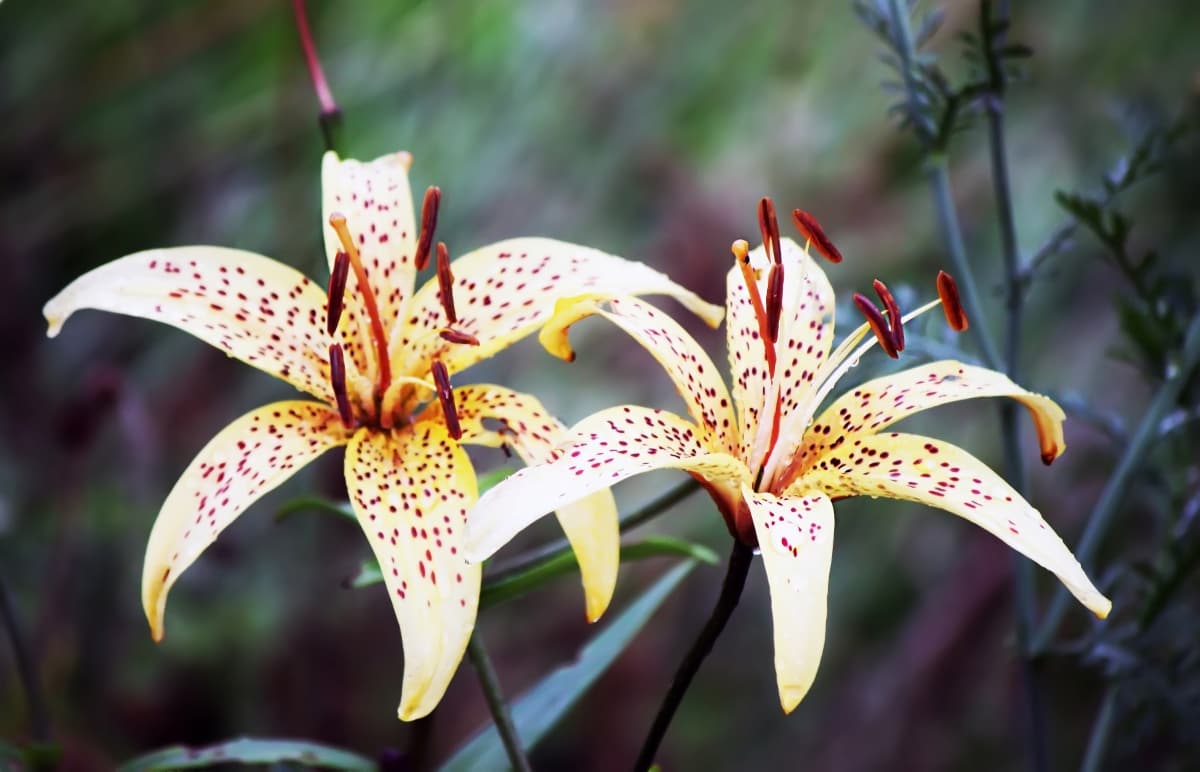Growing lilies is a gratifying experience for many gardeners. Their flamboyant blooms and intoxicating scent are a true delight in any garden. However, to ensure the best growth and flowering, it’s important to provide lilies with the right nutrients, which involves selecting the right fertilizer. The choice of fertilizer can range from organic to synthetic options, with various methods and times for application. Here we learn about these options in detail, offering guidance on optimizing the health and beauty of your lily plants.

Best Fertilizer for Lillies
The Nutritional Needs of Lilies
Like any other plant, Lilies require a balanced amount of nutrients for their growth. These include primary nutrients like nitrogen (N), phosphorus (P), and potassium (K), often referred to as the NPK ratio, and secondary nutrients like calcium, magnesium, and sulfur. Furthermore, lilies also need trace elements, including iron, manganese, copper, zinc, molybdenum, and boron. Therefore, consider these nutritional needs when choosing a fertilizer for your lilies.
Soil Testing and Fertilizer Selection
Before fertilizing, test the soil. The soil’s pH and nutrient content may be determined using this analysis. This information might help you pick a fertilizer. If, for instance, nitrogen is abundant in your soil, but phosphorus and potassium are lacking, you should apply a fertilizer that contains less nitrogen and more phosphorous and potassium. You can get soil testing kits at almost any garden store or online, and the agricultural extension office in your county may also be able to do a test on your soil for you.
A soil test can tell you what kind of fertilizer would work best for your plants. Remember, the goal is to provide a balanced array of nutrients to support all aspects of your lilies’ growth, from leaf and stem development to root growth and flowering. Consider all the options available – homemade compost or specific kitchen waste like banana peels and coffee grounds, organic fertilizers like bone meal or fish emulsion, or synthetic options with specific NPK ratios. Your soil nutrients, lilies, and gardening philosophy will determine the best option.
Homemade Fertilizers for Lilies
Homemade fertilizers can be an excellent way to provide the nutrients your lilies need. They are cost-effective and eco-friendly, allowing you to recycle kitchen waste while reducing your carbon footprint. Compost is a great homemade fertilizer for lilies. It’s rich in organic matter and provides a wide range of nutrients. You can compost from kitchen scraps like vegetable peelings, coffee grounds, eggshells and yard waste like grass clippings, leaves, and small branches.
In case you missed it: The Best Fertilizer for Peonies: When and How to Apply

Composting is relatively simple; it involves making a compost pile or bin, adding organic materials, and turning it regularly to aid decomposition. Once your compost is ready, apply it to the soil around your lilies. Another homemade fertilizer option is banana peels. Rich in potassium, banana peels can be dried and ground into a powder, then worked into the soil around your lilies. Eggshells, rinsed, dried, and crushed, are another excellent source of calcium. Used coffee grounds are nitrogen-rich. To increase nitrogen levels, sprinkle them on your lilies.
When and How to Fertilize Lilies
The timing and method of fertilizing lilies are crucial for their growth and flowering. When new growth starts, early spring is the best time to start fertilizing flowers. This gives the plants a nutrient boost as they start their growth cycle. Fertilize again when the lily buds form to support the energy demands of flowering. Lastly, fertilize once more after flowering, as this helps the plant replenish its energy stores for the following year’s growth.
Start fertilizing by applying your selected fertilizer around the plant base, avoiding foliage and stems. This can cause burning. Water the fertilizer well to ensure it reaches the root zone where it’s most needed. If you’re using a granular fertilizer, follow the manufacturer’s instructions on how much to apply. Generally, a handful per square yard is a good rule of thumb.
Organic and Synthetic Fertilizers for Lilies
Lilies can do very well with organic fertilizers like bone meal, fish emulsion, or seaweed extracts. They release nutrients slowly, improving the soil structure and promoting beneficial microbial activity. These fertilizers are less likely to burn the plants or pollute the environment. However, they may require more frequent application than synthetic fertilizers. Synthetic fertilizers are often more concentrated and faster-acting than organic options. They come in various forms, including granular, liquid, and slow-release pellets.
A balanced, all-purpose fertilizer with an NPK ratio of 10-10-10 or 20-20-20 is generally suitable for lilies. However, for the best results, consider a lily-specific fertilizer with the ideal nutrient proportions for lilies. The application of synthetic fertilizers follows the same general rules as organic ones. Apply in early spring, at bud formation, and after flowering. Be cautious to avoid contact with the plant’s foliage to prevent burning and ensure the fertilizer is thoroughly watered in.
NPK Ratios for Lilies
The NPK ratio of fertilizer indicates the proportion of nitrogen (N), phosphorus (P), and potassium (K) in the product. Nitrogen promotes leafy growth, phosphorus supports root development and flowering, and potassium enhances overall plant health and disease resistance. A balanced NPK ratio, like 10-10-10 or 20-20-20, is a good starting point for lilies.
In case you missed it: The Best Fertilizer for Iris: When and How to Apply

However, lilies are heavy feeders and may benefit from a slightly higher phosphorus content to promote strong, vibrant blooms. A ratio of 5-10-10 or 10-20-20 could be more beneficial during the flowering period. After flowering, a higher potassium content can help the plant replenish its energy stores for the next year, so switching back to a balanced or slightly potassium-rich fertilizer can be beneficial.
Conclusion
In conclusion, lilies require a balanced and consistent supply of nutrients for optimal growth and flowering. Whether you choose homemade, organic, or synthetic fertilizers, the key is to ensure a well-rounded nutrient profile that caters to the specific needs of your lilies. Regular and timely application is essential, as is the careful application to prevent damage to the plant. Understanding and catering to your lilies’ nutritional needs allow you to enjoy a garden full of vibrant, fragrant blooms.
- Feed Your Flock for Less: Top 10 Tips to Save on Chicken Feed
- Ultimate Guide to Ossabaw Island Hog: Breeding, Raising, Diet, and Care
- Hatching Answers: The Top 10 Reasons Your Chickens Aren’t Laying Eggs
- Eggs and Economics: Breaking Down the Cost of Raising Backyard Chickens
- Defend Your Greens: Proven Methods to Keep Iguanas Out of Your Garden
- Ultimate Guide to Cinnamon Queen Chicken: A Comprehensive Guide for Beginners
- Ultimate Guide to California Tan Chicken: Breeding, Raising, Diet, Egg-Production and Care
- Ultimate Guide to Marsh Daisy Chicken: Breeding, Raising, Diet, and Care
- 10 Types of Chicken Farming Businesses You Can Start for Profits